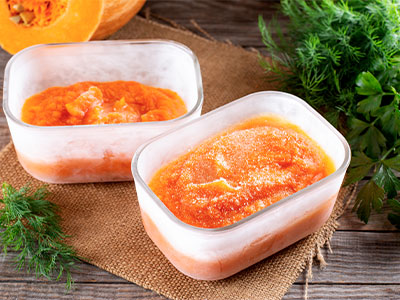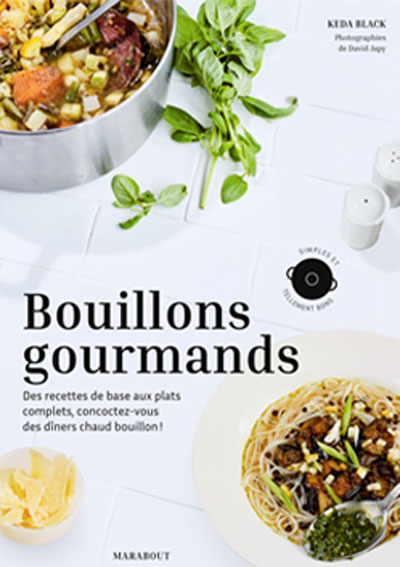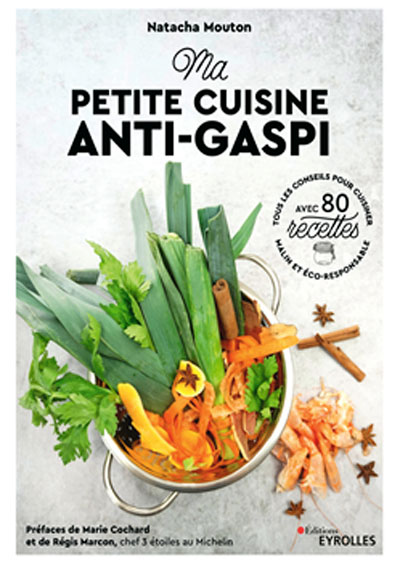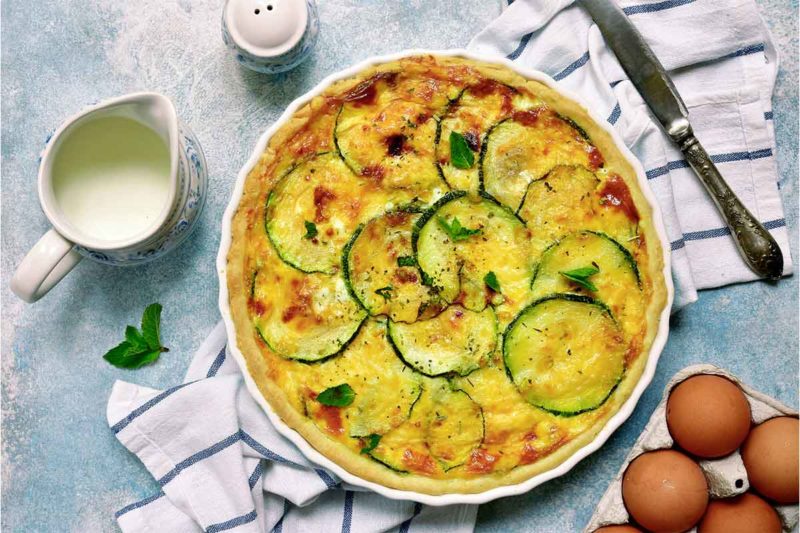Recycled meals are easy, very economical and on the menu increasingly often. Here is all there is to know about re-using leftovers with advice from Natacha Mouton, an expert in anti-food waste cooking.
It’s worth doing, whether to avoid throwing away leftovers, as a matter of principle or for other reasons (to spend less on food, cook quick meals, etc.).
“I come from a family of cordon bleu chefs, but we were taught to clear our plates and not throw food away.” explains Natacha, author of the super- inspiring book Ma petite cuisine anti-gaspi [My anti-food waste cooking]. So while cooking leftovers comes naturally to her, it’s also more and more on trend. Because these days, amid ecological concerns, every little helps towards combatting food waste. And knowing how to cook leftovers is more about culinary creativity than being miserly.
Why cook leftovers?

First of all, it’s more economical. By learning to improvise with what’s in the fridge, you‘re bound to spend less on food and spend less time grocery shopping. Other than that, there are the eco-friendly merits of curbing food waste and bins that fill up after every meal. Bear in mind that according to ADEME (the French agency for ecological transition), 10 million tonnes of still-edible food go to waste every year in France alone. And on average, the amount of food thrown away in France stands at 20 kg per person per year.
Inventive, well-managed cooking
Cooking leftovers is about learning to manage surplus food. Natacha Mouton is full of ideas about that. “Perhaps you’ve eaten all the sausages, but have loads of the accompanying lentils left? Rinse them and serve with vinaigrette.” And there you go, out of almost nothing you’ve got a nice starter lined up. Cooking for the whole family every day calls for great mental agility and outstanding logistical capabilities. “Learning to cook leftovers also allows you to not go grocery shopping all the time, but instead see what’s in the fridge and get inventive with it”, adds the author of Ma petite cuisine anti-gaspi.
A few ground rules for anti-food waste cooking
However, becoming an expert when it comes to leftovers does take a little organisation. But don’t worry, it’s not that hard:
- Make a list of your staple items and always have them in. For example puff pastry crust, crème fraîche, bacon bits, pasta and rice
- Keep the glass jars that ready meals (sauce-based dishes) come in, for freezing the leftovers of your homemade fare.
- Organise your fridge as you would wartime rations. In the front row items “to be eaten quickly” and in the back row those “that can wait”. The same goes for your kitchen cupboards. A shelf for carbohydrates, and another for jarred and canned items. That way, you can see at a glance what artillery you have to hand.
- Draw inspiration from accounts full of clever tips like @lapetitecookingdenat and @camilleselance on Instagram and put together a Pinterest board with “anti-food waste ideas” for those days when you’re lacking inspiration.
- Get back into the art of making broth, canning, jarring or jam making. Or more simply, all kinds of salads and “pasta alla my recipe”.
Anti-food waste cooking is daring
The advantage of leftovers is that anything goes. If the worst case scenario comes to pass and it’s a flop, ultimately it doesn’t matter that much. You put a pasta dish on the menu instead and throw away the leftovers that you messed up. So go right ahead and play around. An example? A poor dried-up slice of cooked ham in the fridge… Bake it and use it as croutons crumbled over a bowl of soup. Whip up quiche or tart mixes and hold the title of “quiche queen” with pride, asking your children to guess what the surprise contents are… Further examples? That Sunday chicken can be turned into chicken in Indian-style curry sauce with rice. If you’ve got three different cheeses jostling for space on your cheeseboard, produce a remix with spaghetti in three-cheese sauce. And what’s left of that ratatouille can form the basis of a delectable savoury cake!
Carry on eating it, or freeze it?

The freezer is quickly going to become your best friend for life. Because it’s easy to freeze leftovers for later. Sure, it’s a good idea, as long as you’re at least a bit organised about it. For starters, you should defrost your freezer once a year. So before going away on holiday for example, use up all the contents. When you get back, log everything you freeze in a little notebook and plan for one “freezer meal” per week (on Mondays for example) or one week per month (the last one) of “freezer meals”, to avoid filling up the compartments without ever emptying them. That will make you manage your freezer contents better.
Lastly, once you have learned to cook leftovers, proceed to the next step and get into the batch cooking way of cooking in advance for the whole family!
Here’s some reading to take it further:
- Ma petite cuisine anti-gaspi by Natacha Mouton, Éditions Eyrolles, €17.90.
- Bouillons Gourmands [Indulgent Broths] by Keda Black, Éditions Marabout, €16.90.









